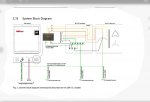No experience with such a beast, but sure seems to me that attaching the 480/277 supply neutral to the wye point and the ungrounded supply lines to the outer ends will force 277 volts across each coil, less any voltage drop in the supply circuit. Neutral can't "drift" when you put such a supply conductor there, unless there is unbalance severe enough to throw the supply voltage off balance.
This is something of a 'hand waving' explanation, but consider:
A pair of resistance loads in series, connected to a 240V supply. The junction between the two loads will be 'neutral' if the two loads are balanced, but if they have different values then the connection between the two loads will not be a good neutral point.
Now consider two matched 120V:120V single phase transformers with their primaries in series and with resistive loads on the secondaries, again connected to your 240V supply.
The primary current will be the same resistive current to the loads, plus a bit of magnetizing current. With no load connected to the secondary the primary (and thus secondary) voltages are balanced and you can derive a neutral. Similarly with balanced resistive loads you can derive a neutral, but if you have unbalanced loads then the 'neutral' voltage can float to any value between the two supply terminals.
Now consider a single phase auto-transformer with a 240V coil and a center tap, again connected to your 240V supply. You have a _single_ coil on a single core with a mid point tap. Any 'line to neutral' load is magnetically coupled to the _entire_ supply coil. A single coil does a pretty good job of deriving a single phase midpoint, which will be approximately neutral when supplied with a split phase source.
A 'wye' autotransformer has 3 separate coils with their various taps. Current loading on _one_ coil is not well distributed to the other coils. This means that if you put a large load on one of your coils (say by connecting a single phase load between a tap on a coil to 'wye point') then high current will want to flow on that single coil, but not on the other coils.
If your transformer were a bank of 3 entirely separate single phase autotransformers in a wye configuration, then the above analysis would be solid. However with a shared three phase core the analysis gets more complex, with load on one coil somewhat 'seen' by the other coils.
However a wye autotransformer has a relatively high impedance neutral point, and thus the neutral point voltage is not very stable when subjected to unbalanced loading. When wye autotransformers are used the supply neutral is connected to the 'wye point' in order to stabilize the line to neutral voltages.
When it is desired to intentionally derive a 3 phase neutral from a 3 phase source (say for grounding an ungrounded delta) then a 'zig-zag' transformer is commonly used. This sort of transformer places 2 coils on each leg of the core, with 2 different phases connected to each coil.
-Jon


